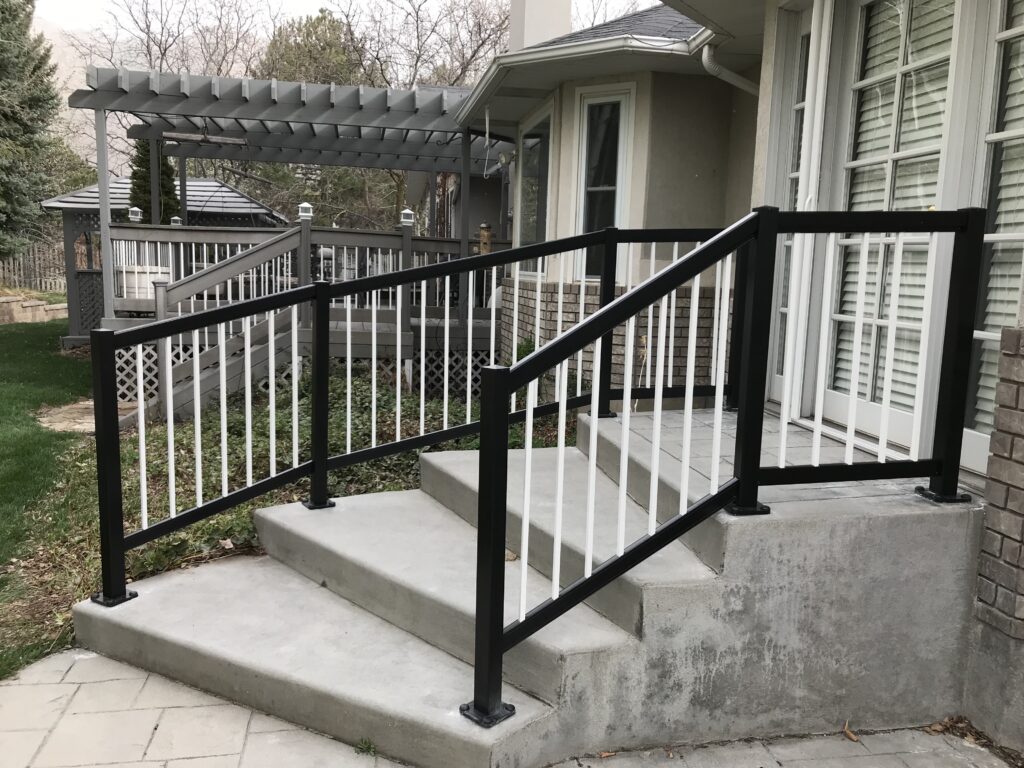In the world of construction and design, handrails hold a significant position as both functional and decorative elements. These essential components not only enhance safety but also add a touch of style to various structures. From staircases and ramps to decks and balconies, handrails play a crucial role in ensuring the well-being of individuals navigating these spaces.
Handrails serve as more than just a simple support system. They are vital for preventing accidents and falls, providing a secure gripping surface that offers stability and balance to those traversing stairways, ramps, and elevated surfaces. By adhering to relevant building codes and safety standards, incorporating proper handrails becomes a necessity, particularly in commercial buildings where large volumes of foot traffic demand extra precautionary measures.
Types of Handrails
Handrails come in a variety of types, each offering its own blend of functionality and style. Understanding the different options available can help you select the most suitable handrail for your specific needs and design preferences. In this section, we will explore the various types of handrails commonly used in construction and their distinguishing features.
Wood handrails are a classic choice known for their warmth, elegance, and versatility. They blend seamlessly with both traditional and contemporary design styles, making them a popular option for residential and commercial spaces. Wood handrails can be crafted from a range of timber species, such as oak, maple, mahogany, or cherry, each imparting its own unique character and grain pattern.
One of the advantages of wood handrails is their natural grip, providing a secure and comfortable surface for users to hold onto. They can be customized with different profiles and shapes, allowing you to create a handrail that suits your aesthetic preferences. Wood handrails can be stained, painted, or left natural to showcase the beauty of the wood grain, giving you the freedom to achieve your desired look.
Metal handrails, particularly stainless steel and aluminum, offer a sleek and contemporary appearance. These materials are known for their durability, strength, and resistance to corrosion, making them suitable for both interior and exterior applications. Stainless steel handrails provide a modern and minimalist aesthetic, while aluminum handrails offer a lightweight option without compromising on strength.
Metal handrails are highly customizable, allowing for various designs and finishes. They can be fabricated with different shapes, including round, square, or rectangular profiles, and can be combined with other materials like glass or wood for added visual interest. The clean lines and smooth surfaces of metal handrails make them easy to clean and maintain, ensuring their longevity.
Glass handrails are renowned for their ability to create an open and visually striking atmosphere. They are often used in contemporary or modern designs to enhance the sense of space and provide unobstructed views. Glass handrails are made with tempered or laminated glass, ensuring safety and durability.
The transparency of glass handrails allows for an uninterrupted flow of light and an illusion of spaciousness. They can be combined with metal or wood posts and handrail brackets for structural support and style. Glass handrails are particularly popular in settings where a sleek and minimalist aesthetic is desired, such as urban residences, commercial buildings, or outdoor decks with scenic views.
Composite handrails are a practical choice known for their low maintenance and durability. They are resistant to moisture, rot, and insect damage, making them suitable for both indoor and outdoor applications. Composite handrails are often used in high-traffic areas, such as commercial buildings, where durability and ease of maintenance are essential.
These handrails are available in a range of colors and finishes, allowing you to achieve the desired style and coordinate with the overall design scheme. Composite handrails are lightweight, making them easy to install and handle. They provide a comfortable gripping surface and can withstand the elements, making them a popular choice for porch railings or outdoor staircases.

Handrails Installation
Proper installation of handrails is crucial to ensure their effectiveness in providing safety and stability. Whether you’re installing handrails for a staircase, ramp, or deck, following the correct installation process is essential. In this section, we will provide an overview of key considerations for installing handrails, ensuring that they meet safety standards and regulations.
- Code Compliance
When installing handrails, it’s important to adhere to local building codes and regulations. These codes specify requirements for handrail height, location, gripping surface, and other factors to ensure user safety. By following these guidelines, you can ensure that your handrail installation is compliant and meets the necessary standards for the specific application.
- Material Selection
Choosing the right material for your handrails is crucial for both aesthetics and durability. Consider factors such as the environment, maintenance requirements, and budget. Wood, metal, glass, and PVC are common options, each with its own benefits and considerations. Select a material that aligns with your design preferences, complements the overall style of the space, and meets the required durability standards.
- Structural Integrity
Handrails should be securely attached to the supporting structure to ensure stability and load-bearing capacity. Properly anchoring handrails to walls, posts, or other suitable supports is essential. Consult with a professional or follow manufacturer guidelines to determine the appropriate installation method for your specific handrail and construction type.
- Gripping Surface and Shape
The gripping surface of the handrail should be comfortable and provide a secure hold. Consider the shape, size, and texture of the handrail to ensure a user-friendly design. Round, square, or ergonomic profiles are common options. The surface should be smooth, without any sharp edges or protrusions that could cause discomfort or injury.
- Installation Height and Location
Handrails should be installed at the appropriate height to accommodate users of different heights and abilities. The height requirements may vary depending on the local building codes and the specific application (e.g., stairs, ramps). Ensure that the handrail is within the recommended range to provide proper support and ease of use.
- Professional Installation
While some handrail installations can be done by knowledgeable DIY enthusiasts, complex or large-scale projects are best handled by professionals. Hiring an experienced handrail installation company ensures that the installation process is done correctly, minimizing the risk of errors and ensuring optimal safety and functionality.
By following these considerations and guidelines, you can ensure a successful handrail installation that prioritizes safety, stability, and user comfort. In the next section, we will explore maintenance tips to keep your handrails in top condition and prolong their lifespan.
Maintaining Handrails
Regular maintenance is essential to preserve the safety, functionality, and aesthetics of handrails. Follow these key maintenance tips:
- Routine Cleaning: Regularly clean handrails with a mild soap or designated cleaner. Rinse thoroughly and dry with a soft cloth.
- Inspection: Check for damage, loose screws, or deteriorating sections. Promptly address issues to prevent further damage and ensure stability
- Surface Maintenance: Follow appropriate maintenance procedures based on the material of your handrail, such as staining or polishing
- Address Wear and Tear: Refinish, repaint, or replace worn-out sections to maintain the gripping surface and appearance
- Seasonal Considerations: Clear ice and snow during winter and address mold or mildew growth in humid environments
- Professional Maintenance: Engage professionals for periodic inspections, repairs, and expert recommendations.
By implementing these maintenance practices, you can ensure the longevity and safety of your handrails.
Frequently Asked Questions
What is the purpose of handrails? Handrails serve as a safety feature, providing support and stability for individuals while navigating stairs, ramps, or elevated surfaces. They help prevent falls, especially for those with mobility challenges or balance issues.
- Are handrails required by building codes? Yes, most building codes, such as the International Building Code (IBC), have specific requirements for handrails in residential and commercial buildings. These codes outline criteria such as handrail height, gripping surface dimensions, and installation locations to ensure user safety.
- What is the ideal height for handrails? The height of handrails is typically determined by building codes. In the United States, for example, the IBC requires handrails to be between 34 and 38 inches in height measured from the leading edge of the stair tread or ramp surface.
- Can handrails be installed on both sides of a staircase or ramp? Yes, installing handrails on both sides of a staircase or ramp is often recommended for improved safety and accessibility, especially in public or commercial buildings.
- What materials are commonly used for handrails? Handrails can be made from various materials, including wood, metal (such as stainless steel or aluminum), glass, or PVC. The choice of material depends on factors such as aesthetic preferences, durability, and maintenance requirements.
Remember to consult local building codes and regulations and consider seeking professional assistance for handrail installations to ensure compliance and safety.
Handrails play a vital role in ensuring safety and stability while adding aesthetic appeal to residential and commercial spaces. By choosing the right handrail type, following installation guidelines, and implementing regular maintenance, you can create a secure environment for navigating stairs, ramps, and elevated surfaces. Adhering to building codes, considering material options, and addressing common concerns will help you make informed decisions when it comes to handrail installation. Invest in high-quality handrails and prioritize safety to enhance the overall functionality and visual appeal of your space.
